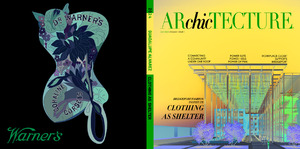| dc.description.abstract | Fast Fashion is a modern phrase referring to the quick production of impulse fashion trends. Originating from the mass production of garments from recent popular brands, the term has evolved from the overproduction of clothing since the 1800s. Fast fashion has not only had an environmental impact but has contributed to the mass production of buildings that are shortly abandoned. The overproduction of these temporarily used buildings is not a new phenomenon, it has been a common occurrence throughout the fashion industry that started during the Industrial Revolution. Textile factories dominated cities' urban landscapes, growing faster than the consumption needed. Today this overproduction has led to landfills and buildings filled with unused clothes, resulting in waste of clothing, and building materials. This subject relates to the field of architecture alone, as seen in the rise of abandoned buildings that are left neglected and begin to create “poorly developed neighborhoods”. This generated the investigation of how an adaptive reuse project intertwined with fashion ideas could aid those with limited resources. To revive the cultural impact of a neglected community in Bridgeport, Connecticut, a clothing factory is being transformed into a fashion institute intertwined with a business aspect to address social challenges. Fashion and architecture provide impactful design resolutions that are utilized daily but often overlooked. Designs are compositions that organize and portray an idea that aims to provide a solution to a problem. For the majority, buildings and clothing are seen as two separate basic amenities that serve two separate functions, seeming to be two very distinct elements. Taking a closer look, their parallels are evident through the creative process, functionality, and synesthesia, creating a perception that both entities address similar challenges through their distinct approaches. Despite these fields being able to stand independently, fashion and architecture derive from the same human impulse for protection and shelter. The project Clothing as Shelter is an investigation that highlights the capabilities of architecture to capture the attention of an observer the same way fashion gives attention to the person wearing a piece of clothing. | en |


